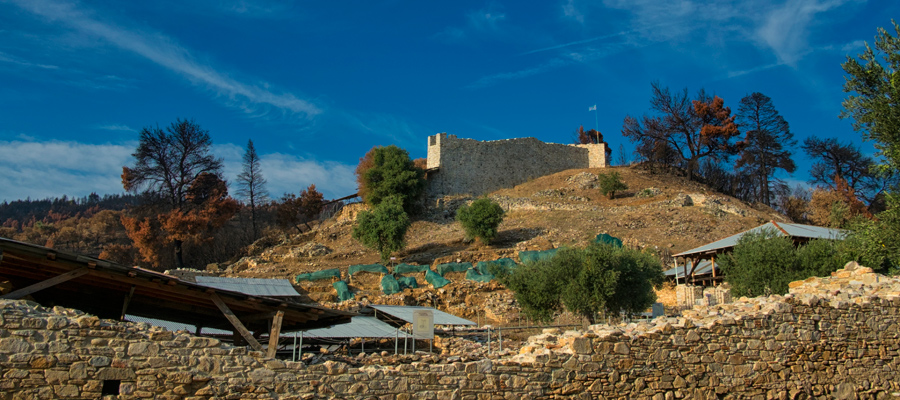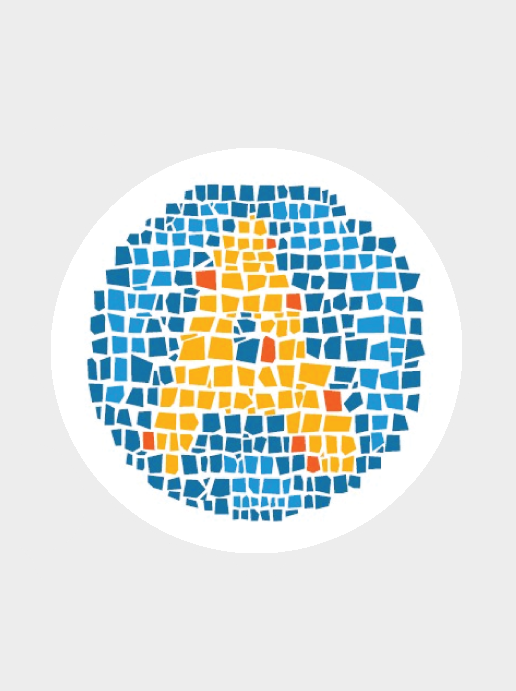Η μονή Ζυγού είναι ένα παλιό αγιορείτικο μοναστήρι το οποίο ιδρύθηκε στα μέσα του 10ου αιώνα και καταστράφηκε λίγο πριν από το 1198. Βρίσκεται περίπου 2 χλμ. ανατολικά της Ουρανούπολης, ακριβώς έξω από τα όρια του Αγίου Ορους, σε μια θέση γνωστή και ως Φραγκόκαστρο (μόλις 40 μέτρα έξω από τη σημερινή οριογραμμή του Αγίου Ορους). Σύμφωνα με στοιχεία, φαίνεται να είναι από τα αρχαιότερα μοναστικά ιδρύματα της Αθωνικής χερσονήσου. Ηρθε στο φως από τη σκαπάνη των αρχαιολόγων, με επικεφαλής τον Ιωακείμ Παπάγγελο, μετά από έρευνα το 1984. Την ευθύνη της αρχαιολογικής έρευνας έχει η 10η Εφορεία Βυζαντινών Αρχαιοτήτων.
Oπως αναφέρει ο επιστημονικός υπεύθυνος της ανασκαφής «το Αγιο Ορος από τότε που άρχισε να κατοικείται συνεχώς ανανεώνεται. Ετσι, εαν κάποιος θέλει να μελετήσει τις εντός του Αγίου Ορους μονές από άποψη αρχαιολογική, κτιριολογική και οργάνωσης του λατρευτικού χώρου, πρέπει να ψάξει αλλού. Η μονή Ζυγού ιδρύθηκε τον 10ο αιώνα και το 1198 ήταν ήδη ερημωμένη. Λιθολογήθηκε ελάχιστα –άρα ό,τι υπάρχει εκεί είναι του αρχαίου Αγίου Ορους».
Στην ανασκαφή ο επισκέπτης θα δει το κάστρο, τους πύργους και κυρίως το καθολικό της μονής Ζυγού το οποίο οι αρχαιολόγοι φέρνουν στο φως. Το κάστρο αποτελείται από πέντε οικοδομικές φάσεις, όλες παλαιότερες του 1211. Η εντός των τειχών επιφάνεια φτάνει τα 5,5 στρέμματα και τα τείχη είχαν 11 πύργους –κάποιοι από τους οποίους αναστηλώνονται.
ΙΣΤΟΡΙΚΑ ΣΤΟΙΧΕΙΑ
Οταν ο Οσιος Αθανάσιος ο Αθωνίτης, ιδρυτής της μονής Μεγίστης Λαύρας, πρωτοήρθε στο Αγιο Ορος γύρω στο 958, εγκαταστάθηκε στην περιοχή της μονής του Ζυγού κι έκανε τη πρώτη ασκητική του δοκιμασία υπό την επίβλεψη ενός γέροντος μοναχού της περιοχής. Ομως, η πρώτη αναφορά του τοπωνυμίου Ζυγός γίνεται σε έγγραφο του 942, στο οποίο δεν προσδιορίζεται εαν το όνομα αυτό αναφέρεται σε τοποθεσία, μοναστήρι ή οικισμό. Η πρώτη σαφής αναφορά για την ύπαρξη της μονής Ζυγού γίνεται το 992, όταν ήταν ήδη ένα σημαντικό μοναστικό κέντρο, με σαφή ρόλο στη λειτουργία της Αθωνικής πολιτείας.
Το 1018, όταν ηγούμενος ήταν ο Νύφων, αυξήθηκε η περιουσία της μονής με τη χορήγηση εκτάσεων από την Αγιορείτικη κοινότητα. Την ίδια περίοδο επεκτάθηκε το κτιριακό συγκρότημα και κτίστηκε το νέο Καθολικό (κεντρικός ναός), το οποίο έχει εντοπιστεί και βρίσκεται στο επίκεντρο της ανασκαφικής και αναστηλωτικής προσπάθειας.
Κατά τον 11ο αιώνα η μονή του Ζυγού ήταν ένα από τα σημαντικότερα Αγιορείτικα μοναστήρια, με υψηλή θέση στην ιεραρχία των μονών. Φαίνεται ότι μέσα σ’ έναν αιώνα ολοκληρώθηκε το κτιριακό συγκρότημα όπως διακρίνεται σήμερα μετά την ανασκαφική έρευνα. Πρόκειται για ένα πεντάπλευρο κάστρο, ενισχυμένο από δέκα ή έντεκα πύργους. Για λόγους που δε γνωρίζουμε, στα τέλη του 12ου αιώνα η μονή ήταν έρημη και με χρυσόβουλο του αυτοκράτορα Αλεξίου Αγγέλου Κομνηνού παραχωρήθηκε μαζί με τα μετόχια της στην επανασυσταθείσα μονή Χελανδαρίου.
Γύρω στο 1206 φαίνεται πως εγκαταστάθηκε στο κάστρο του Ζυγού ένας Φράγκος άρχοντας ο οποίος εξορμούσε για να λεηλατεί το Αγιο Ορος –γεγονός που σταμάτησε το 1211, με παρέμβαση του Πάπα της Ρώμης. Γι’ αυτό και τα ερείπια της μονής ήταν γνωστά στην περιοχή και αναφέρονται συχνά -και στους χάρτες- ως Φραγκόκαστρο.
Η ΑΡΧΑΙΟΛΟΓΙΚΗ-ΑΝΑΣΚΑΦΙΚΗ ΕΡΕΥΝΑ
Η εγκατάλειψη και η απόληψη λίθων για οικοδομικό υλικό μετέτρεψαν το μοναστήρι σ’ έναν θλιβερό σωρό ερειπίων, ο οποίος συνέχισε να αποτελεί πηγή οικοδομικών υλικών για τους κατοίκους της περιοχής μέχρι το 1980. Μέσα και γύρω από το μοναστήρι λειτουργούσαν έξι ασβεστοκάμινοι. Χαρακτηριστικά αναφέρεται ότι από εδώ προήλθε ο ασβέστης που χρειάστηκε για να κτιστεί το Ξενία στην Ουρανούπολη, το 1960.
Πολύτιμες πληροφορίες για τη μονή αντλούμε από τα αρχεία της 10ης Εφορείας Βυζαντινών Αρχαιοτήτων, η οποία είναι υπεύθυνη για την αρχαιολογική έρευνα. Με τις τελευταίες ανασκαφικές έρευνες διαπιστώθηκε ότι η μονή κτίστηκε σε θέση όπου προϋπήρχαν εγκαταστάσεις από τον 4ο π.Χ. μέχρι και τον 6ο μ.Χ. αιώνα. Το κτιριακό συγκρότημα αποτελείται από τον παλαιό πυρήνα (τον δυτικό), ο οποίος διπλασιάσθηκε με επέκταση προς ανατολάς.
Το Καθολικό βρίσκεται στην επέκταση και άρχισε να δημιουργείται κατά το πρώτο μισό του 11ου αιώνα. Αποτελείται από τέσσερις σαφώς διακρινόμενες οικοδομικές φάσεις: Αρχικά οικοδομήθηκε ο σύνθετος τετρακιόνιος κυρίως ναός, με τον στενό νάρθηκά του. Σε δεύτερη φάση προστέθηκε το βόρειο παρεκκλήσι με τον κτητορικό τάφο, στην τρίτη ο εξωνάρθηκας και στην τέταρτη το νότιο μονόχωρο τρουλλαίο παρεκκλήσι με τον κτητορικό, επίσης, τάφο. Ακολούθησε η κατασκευή των τριών επισήμων τάφων σε επαφή με τον νότιο τοίχο του Καθολικού. Πρόκειται για σταυροειδή εγγεγραμμένος ναό, με δύο ταφικά παρεκκλήσια.
Οι τοιχοποιίες του ναού σώζονται σε ύψος 2-4 μέτρων. Τα μαρμάρινα αρχιτεκτονικά μέλη του, έργα περίτεχνα, λεηλατήθηκαν μερικώς σε πολύ πρώιμη φάση και τα περισσότερα από όσα έμειναν ήταν διαμελισμένα. Οι τέσσερις κίονες που συγκρατούσαν τον τρούλο λείπουν, όμως διατηρείται στην θέση του, σχεδόν ακέραιο, το μαρμάρινο διάφραγμα του βορείου δίλοβου ανοίγματος του κυρίως ναού. Το εσωτερικό του ναού ήταν επιχρισμένο με λεπτόκοκκο πατητό ασβεστοκονίαμα και ήταν τοιχογραφημένο. Στο νάρθηκα διατηρήθηκαν τμήματα από τη μεγάλη παράσταση του Ευαγγελισμού και διάλιθοι σταυροί. Στην κόγχη της προθέσεως του νότιου παρεκκλησίου αποκαλύφθηκαν δύο στρώματα τοιχογραφιών με την ίδια παράσταση ενός ολόσωμου ιεράρχη, πιθανώς του Αγίου Νικολάου.
Στα δάπεδα του Καθολικού και του βόρειου παρεκκλησίου υπάρχουν εξαιρετικής τέχνης μαρμαροθετήματα, προφανώς έργα του 11ου αιώνα, τα οποία σώζονται σε ικανοποιητική κατάσταση. Κατά τον 16ο – 17ο αιώνα, όταν το Καθολικό ήταν μισοερειπωμένο, εγκαταστάθηκε ένα συγκρότημα ελαιουργείου στο νάρθηκα. Ενα δεύτερο ελαιουργείο εγκαταστάθηκε την ίδια εποχή σ’ ένα ερειπωμένο ήδη κτίριο στην αυλή της μονής, αλλά η λειτουργία τους σταμάτησε πριν από το 1858.
Η αρχαιολογική σκαπάνη έχει φέρει στο φως πολλά ευρήματα, ενώ οι ανασκαφικές και αναστηλωτικές εργασίες βρίσκονται σε εξέλιξη. Τα σημαντικότερα κινητά ευρήματα της μονής του Ζυγού είναι ο μαρμάρινος αρχιτεκτονικός διάκοσμος καθώς και τα μαρμαροθετημένα ψηφιδωτά δάπεδα, χαρακτηριστικό της βυζαντινής αρχιτεκτονικής. Επίσης, από τα ανασκαφικά μικροευρήματα, ξεχωρίζουν τρία μολυβδόβουλα του 11ου αιώνα, κλείστρα βιβλίων, ένα αργυρό επίχρυσο μετάλλιο με χαρακτή παράσταση της Αγίας Παρασκευής, μια μικροσκοπική σφραγίδα, εγκόλπιο με παράσταση Αρχαγγέλου, υάλινες ψηφίδες από εντοίχιο ψηφιδωτό, χάλκινες βελόνες και δακτυλήθρες, μαχαίρια, νομίσματα 11ου και 12ου αιώνα, εφυαλωμένη κεραμική και γυάλινα αγγεία της ίδιας εποχής.
ΜΟΙΡΑΣΟΥΤΟ ΑΡΘΡΟ




